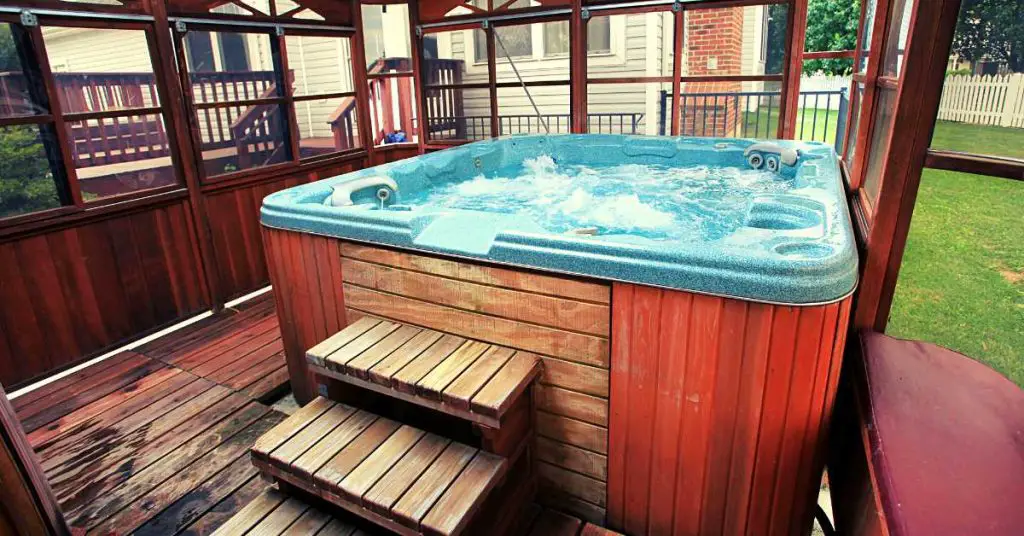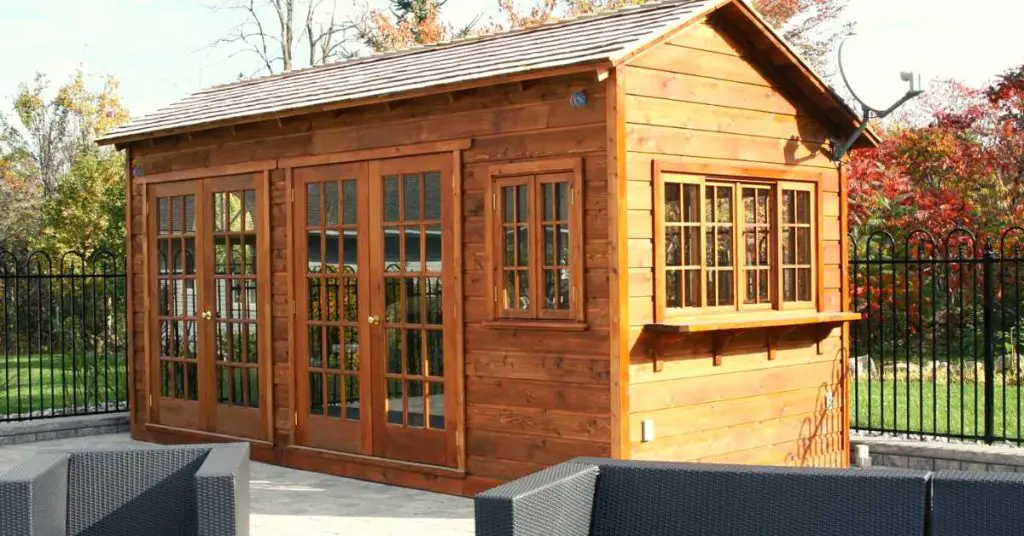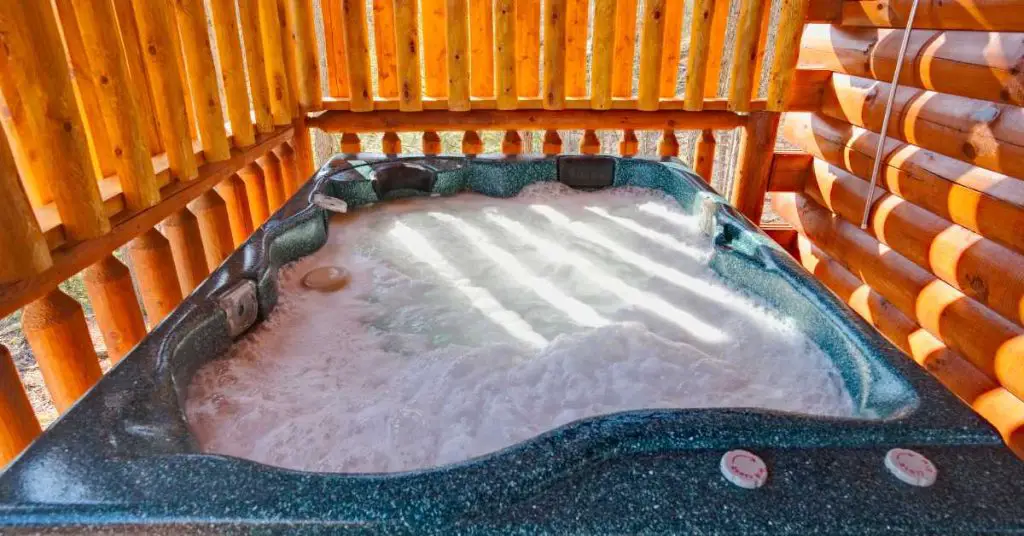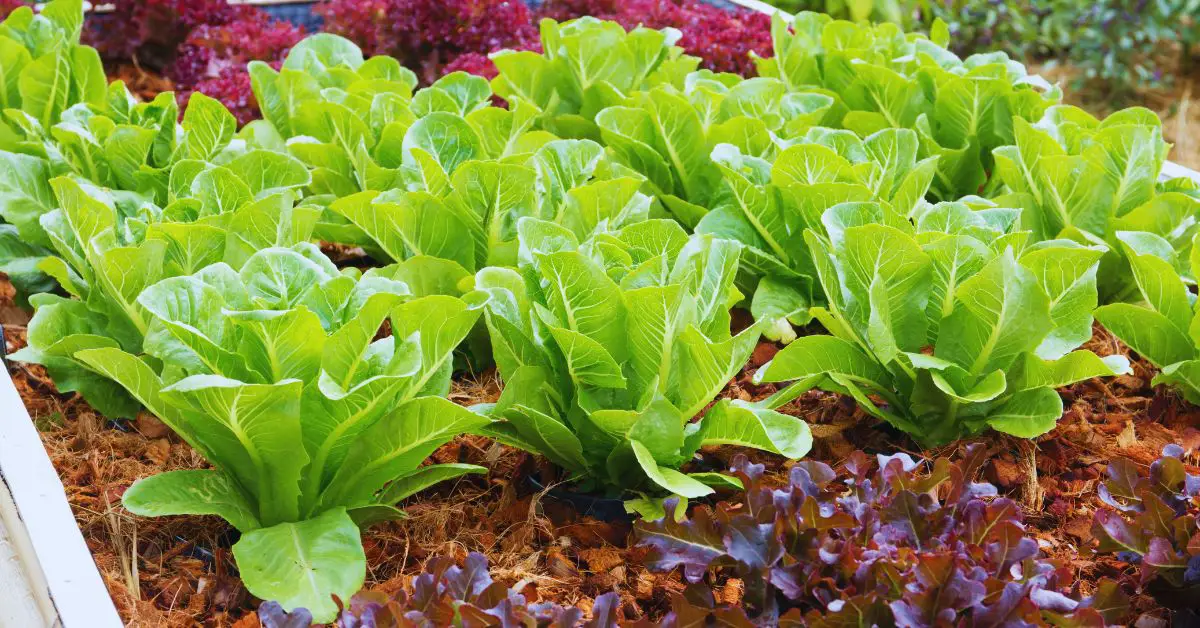Can you put a hot tub in a shed? Yes, you can put a hot tub in a shed or build a shed around your existing hot tub. Depending on the size of your shed, you may need to make sure it is structurally sound enough to support the weight of a hot tub and its occupants. You will also need to consider ventilation and electrical requirements. Proper insulation should be installed around the walls and ceiling, as well as any pipes that lead outside.
Creating Your Personal Spa: The Importance of Considering a Hot Tub in a Shed
Hot tubs have become increasingly popular over the years, as they provide a relaxing and therapeutic experience. Many people enjoy soaking in their hot tub after a long day at work or to unwind on the weekends.
However, installing a hot tub indoors is not always feasible due to space constraints or the potential for water damage. That’s where sheds come in – they offer an excellent solution for those who want to enjoy their hot tub while protecting it from the elements.
The Benefits of Installing Your Hot Tub in a Shed
There are several advantages to putting your hot tub in a shed. First and foremost, it provides much-needed protection from the weather.
Depending on where you live, your area may experience harsh winters or scorching summers that can cause damage to your hot tub. By placing it inside a shed, you can shield it from rain, snow, wind, and direct sunlight.
Moreover, having your hot tub in a separate area can create an intimate and cozy atmosphere for relaxation without any distractions. It also offers privacy and seclusion so you can soak up some alone time without worrying about prying eyes.
Having your own personal spa at home means that you don’t have to pay for expensive spa treatments or memberships anymore. You can take advantage of all the benefits of hydrotherapy whenever you want without leaving your house.

Factors to Consider Before Putting Your Hot Tub in a Shed
While putting your hot tub inside a shed is an excellent idea overall, there are still some things you need to think about before taking action. For example: – Is there enough space?
Make sure that you have enough room for both the shed and the hot tub. – Can your floor support the weight of a hot tub?
Hot tubs can be heavy, so you need to ensure that your floor can handle the added weight. – Is there enough ventilation?
Proper ventilation is crucial to prevent mold growth, corrosion, and other issues. – Can you meet the electrical requirements?
Most hot tubs require a dedicated electrical circuit, which means you may need to hire an electrician to install wiring and outlets. Taking these factors into account will help you decide whether putting your hot tub in a shed is the right decision for you.
Shed Size and Placement
Determining the Right Size of the Shed for Your Hot Tub
When it comes to determining the right size of a shed for your hot tub, you need to consider various factors. First, you must measure the dimensions of your hot tub and add some extra space around it. This additional space is necessary for easier access and maintenance purposes.
Typically, most hot tubs are between 6-8 feet in diameter and require at least 7 feet of height clearance. Once you have the hot tub’s measurements, determine how much additional space you want around the hot tub to make moving around more comfortable.
Remember to factor in any stairs or steps required for getting into your shed. Typically, adding an extra 2-3 feet all-around should suffice.
Choosing the Best Location for Your Shed
The location of your shed is just as important as its size when it comes to installing a hot tub inside it. You must decide if you want an indoor or outdoor shed for your hot tub.
If placing it indoors, ensure that there is enough room and ventilation so that moisture doesn’t build up inside. If building an outdoor shed, consider the weather patterns in your area before choosing a location to avoid extreme temperatures or harsh elements that could negatively affect your hot tub’s performance over time.
Ideally, pick an area with a flat surface that has good drainage. Also remember to check with local zoning laws before selecting a final site—some towns have regulations on where sheds can be placed on properties.
Ensure there’s enough extra space around your hot tub when picking out the perfect-sized shed while also keeping elevation requirements in mind. Additionally, take into consideration whether you prefer an indoor or outdoor setup based on climate control preferences while factoring in zoning laws affecting placement options.
Electrical Requirements
Understanding Electrical Needs for a Hot Tub in a Shed
Before installing a hot tub in a shed, it’s important to understand the electrical requirements involved. Most hot tubs have specific voltage and amperage requirements that must be met.
In addition, the electrical wiring must be capable of handling the load required by the hot tub. A licensed electrician can help you determine the proper electrical needs for your hot tub and advise you on any upgrades that may need to be made to your existing electrical system.
Hiring an Electrician to Install Wiring and Outlets
While some homeowners may feel comfortable doing their own electrical work, it is highly recommended that you hire a licensed electrician to install wiring and outlets for your hot tub. An electrician will ensure that everything is properly grounded, wired, and up to code for safety reasons.
They can also help you determine where the best location is to install outlets and ensure that there are no overloads on any circuit breakers. Keep in mind that installing electrical wiring and outlets can be complex work, especially if you’re not familiar with electrical systems.
Attempting DIY installation could result in serious injury or damage to your property if not done correctly. Don’t take chances with safety; always hire a professional electrician for any hot tub installation work.
Costs of Electrical Work
The cost of hiring an electrician will vary depending on several factors such as location, complexity of the job, and whether or not upgrades are needed for existing electrical systems. On average, you can expect to pay anywhere from $60-$120 per hour plus materials costs for professional installation services.
While it may seem like an added expense upfront, investing in professional installation by an electrician will pay off over time by ensuring both safety and functionality of your hot tub setup. Plus, it’s always better to be safe than sorry when it comes to handling electricity!
Importance of Proper Ventilation in a Hot Tub Shed
When it comes to installing a hot tub in a shed, proper ventilation is crucial. Without it, the air inside the shed can become humid and stuffy, leading to a buildup of moisture that can cause mold and mildew growth.
The heat from the tub can also make the air inside the shed uncomfortable and unbearable for extended periods. For this reason, it’s essential to ensure that your hot tub shed has sufficient ventilation.
This can be achieved by installing vents or windows that allow air to circulate around the shed. Vents are typically installed in the roof or walls of the shed and are designed to draw out moist air while allowing fresh air to enter.

Installing Vents or Windows for Air Circulation
When installing vents or windows in your hot tub shed, there are several factors you should consider. The size and number of vents or windows needed will depend on the size of your shed and your hot tub.
It’s recommended that you have at least two vents or windows installed to provide adequate ventilation. The location of vents or windows is also important.
Vents should be placed at opposite ends of the hot tub shed to ensure optimal airflow. This allows fresh air to enter from one side while moist air is drawn out from another side.
When installing windows, consider using tempered glass for added safety. Tempered glass is much stronger than regular glass and shatters into small pieces when broken rather than large shards.
Maintaining Your Ventilation System
Once you have installed your ventilation system, it’s important to maintain it regularly. This involves cleaning out any debris that may clog up your vents or windows over time. Be sure not to block any vents or windows with objects such as furniture as this can restrict airflow and reduce ventilation efficiency considerably.
Proper ventilation is essential for ensuring optimal comfort and safety when using a hot tub in a shed. By installing vents or windows, you can ensure that there is sufficient airflow to keep the air inside fresh and clean.
Insulation
Insulating the walls, ceiling, and floor to maintain temperature
When it comes to putting a hot tub in a shed, insulation is critical. Proper insulation ensures that the shed retains heat and protects the hot tub from external weather conditions. Insulation helps the shed retain heat during cold months, which means you don’t have to worry about your water freezing over.
In addition to providing thermal protection, insulation minimizes noise levels from the hot tub pump and jets. The last thing you want is for your neighbors to hear every time you take a relaxing soak in your hot tub!
Types of insulation materials to consider
There are different types of insulation materials on the market that you can use for your hot tub shed. The most common types include fiberglass batts, foam boards, and blown-in cellulose or fiberglass.
Fiberglass batts are easy to install and relatively inexpensive compared to other options. They come in rolls or pre-cut sheets that fit between wall studs perfectly.
Foam boards are another option made up of rigid panels of polystyrene or polyurethane that serve as barriers against air infiltration. Foam boards require specialized tools for cutting but provide excellent thermal protection.
Blown-in cellulose or fiberglass is an excellent option if your shed’s walls have already been closed up because they can be blown into cavities using specialized equipment. This type of insulation provides superior soundproofing as well.
Insulating your hot tub shed is critical if you want to maximize its usability throughout the year while protecting it from external factors such as weather conditions and noise pollution. There are different materials on the market today for insulating sheds; be sure to choose one that fits within your budget and personal needs while keeping safety in mind!
Flooring Options
Choosing Durable and Waterproof Flooring Options for Your Hot Tub Area
When it comes to selecting flooring options for your hot tub area, there are several factors to consider. The flooring needs to be durable, non-slip, and able to withstand moisture and high temperatures.
The most popular options include concrete, tiles, or rubber mats. Concrete is a popular option because it is durable and easy to clean.
It can also be stained or stamped to give it a unique look. However, make sure the concrete is sealed properly so that water does not seep through the surface.
Tiles are another common choice because they are available in a variety of materials such as porcelain or ceramic. They are also slip-resistant and come in different colors and designs that can complement your shed’s décor.
However, tile floors can be slippery when wet, so make sure you choose a textured tile or add anti-slip mats. Rubber mats are also an increasingly popular option because they provide excellent traction while being waterproof.
They come in different sizes and shapes that can fit any hot tub area size. Rubber mats are also easy to clean but may not have as many color choices as tiles.
Popular Flooring Materials Such As Concrete, Tiles Or Rubber Mats
Concrete floors provide a sturdy foundation with both practicality and aesthetic appeal; they’re relatively inexpensive compared with other flooring options available on the market today too! You can stamp concrete floors with patterns like wood grain or create a colorful abstract design using stains or dyes.
You could go for tiles too! Tile floors offer an elegant finish that’s more slip-resistant than some other materials out there.
Porcelain tiles are one of the strongest materials available on the market today with good water resistance ideal for use around your hot tub space – so you won’t have to worry about any damages caused by moisture! Rubber mats are a durable and waterproof option that you can use to protect your hot tub area floor.
These mats come in different sizes, thicknesses, and shapes that will suit any design preference you may have. Rubber is also an excellent material for preventing slips, making it a safe choice for your hot tub shed.
Whatever option you choose, keep in mind that the flooring needs to be durable and able to withstand moisture as well as the high temperatures of the water in the hot tub. Consider anti-slip options as well because safety is always important when using a hot tub.
Hot Tub Maintenance
Regular Maintenance Tips to Keep Your Hot Tub Running Smoothly
Keeping your hot tub in top condition requires regular maintenance. Proper upkeep ensures that your hot tub remains clean, safe, and functional. Here are some tips to help you maintain your hot tub:
- Check Water Quality Regularly: The quality of water in your hot tub can affect its performance and durability. Use a water testing kit to check the pH balance, chlorine level, and alkalinity of the water frequently. Adjust as necessary.
- Drain and Refill Periodically: Even with proper maintenance, hot tubs accumulate contaminants over time, such as oils from lotions or hair products. Draining and refilling the hot tub every few months is recommended to keep the water fresh.
- Clean Filters Monthly: Hot tub filters trap debris and particles in the water so they don’t circulate back into it. Clean these filters once a month to keep them functioning properly.
- Check Jets Regularly: Jets play an important role in circulating water throughout the hot tub’s system; ensure they are working correctly by checking for any clogs or blockages regularly.
Cleaning and Sanitizing Procedures
Cleaning and sanitizing your hot tub is essential for maintaining a healthy environment for you and your guests while using it. Here are some cleaning procedures you should follow:
- Use Appropriate Cleaning Products: Avoid using any harsh chemicals that may damage or corrode your hot tube surface or components when cleaning it.
- Scrub Surfaces Carefully: Scrubbing down surfaces with a mild cleaning solution will prevent dirt buildup along walls or bottom of the tubes.
- Wipe Down Surfaces Before Use: Before getting into the spa, use a fresh towel to remove excess dirt or body oils from your skin.
- Limit Usage When Sick: When someone is sick, try to keep them out of the hot tub where germs and bacteria can easily spread.
By following these simple maintenance tips, you’ll not only keep your hot tub clean and functional but also ensure a safe and healthy environment for you and your guests to enjoy.

Safety Measures
Securing Your Shed Area
When installing a hot tub in a shed, it’s important to ensure that the area is properly secured. This means implementing safety measures such as fencing or locks around the shed area to prevent unauthorized access. One option is to install a fence around the perimeter of your yard, with a gate that can be locked when not in use.
Another option is to install locks on the doors and windows of your shed. It’s also important to consider the placement of your hot tub within the shed itself.
If possible, try to position it away from windows or doors where someone could easily climb in and gain access. You may also want to consider installing motion sensor lights around the exterior of your shed for added security.
Proper Chemical Use
Another important aspect of hot tub safety is proper chemical use and water treatment products. When you first install your hot tub, it’s essential that you follow all manufacturer instructions for adding chemicals and balancing pH levels. This will not only ensure that your water stays clean and clear but will also help prevent skin irritation or other health issues.
It’s important to note, however, that improper chemical use can be dangerous. Always wear gloves and protective eyewear when handling chemicals, and never mix different products together unless specifically directed by instructions.
When adding chemicals, make sure you follow dosage instructions carefully – too much product can cause damage to both your hot tub and any bathers who enter it! It’s also a good idea to invest in a testing kit so you can regularly check water quality levels.
Maintaining Hot Tub Covers
In addition to securing your shed area and using chemicals properly, maintaining hot tub covers is another essential safety measure for those with an outdoor spa setup. A high-quality cover will help keep dirt and debris out of your spa water and can also help prevent accidental drownings by keeping young children and pets out of the water when it’s not in use.
To maintain your cover, regularly inspect it for tears or other damage that could compromise its effectiveness. You may also want to invest in a cover lift system, which will make it easier to remove and replace your cover as needed.
Regular Inspections
Regular inspections are an important safety measure for any hot tub owner. This means checking all elements of your hot tub setup – from the shed structure itself to the hot tub components such as pumps and jets – to ensure everything is functioning properly. During these inspections, be sure to look for signs of wear or damage, such as cracks in the shed walls or leaks in the hot tub itself.
If you notice anything amiss, take action right away – whether that means contacting a professional repair service or simply tightening up screws yourself. By staying on top of maintenance tasks like these, you can help keep your hot tub and everyone who uses it safe and sound!
Conclusion
Recap of Important Points to Consider When Putting a Hot Tub in a Shed
Putting a hot tub in a shed requires careful consideration of several factors. The size and placement of the shed are crucial, as is ensuring proper ventilation and insulation. You should also carefully consider flooring options and hot tub maintenance requirements before making your final decision.
Don’t forget to take safety measures into account, such as fencing or locks around the shed area. Another important factor to keep in mind is electrical requirements.
It’s crucial to hire an electrician who can install wiring and outlets that meet the specific needs of your hot tub. And finally, regular maintenance is essential for keeping your hot tub running smoothly and avoiding costly repairs down the line.
Encouragement to Seek Professional Advice Beforehand
While it may be tempting to try putting a hot tub in a shed on your own, we highly recommend seeking professional advice beforehand. A qualified contractor or electrician can help you determine whether your shed is suitable for a hot tub installation, ensure that all electrical work meets code standards, and provide guidance on materials and insulation options. It’s also important to check local building codes before proceeding with any construction projects.
In some cases, permits may be required for installing sheds or making major modifications to existing structures. Putting a hot tub in a shed can be an excellent way to create a cozy outdoor oasis that you can enjoy year-round.
By taking the time to plan carefully and seek professional advice when necessary, you can ensure that your project is safe, functional, and enjoyable for many years to come. So go ahead – imagine yourself relaxing in warm bubbly water on even the coldest winter days!





